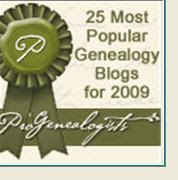While my favorite non-bagel breads are thick Persian barbari and fresh egg challah, there's just something about a bagel that puts it at the top of the bread list.
FOR Maria Balinska, it was never just bagels and yuks. “People used to laugh at me when I told them I was writing a book about bagels,” she said. “I’d tell them it was actually quite serious.”
Her book, “The Bagel: The Surprising History of a Modest Bread,” was published this month by Yale University Press, and Ms. Balinska, the editor for world current affairs radio for BBC News in London, was in New York to talk about it over bagels and eggs at the Second Avenue Deli.
The book, thought-provoking and fact-filled, is one that also uses the bagel as a way of viewing Polish-Jewish history. It begins with an unexpected look at a boiled, baked and ring-shaped possible ancestor in southern Italy and a steamed and baked possible predecessor found among the Muslim Uighurs in northwestern China. The book moves on to Poland, the Jewish bagel’s probable birthplace, and the bagel’s older and similar Christian relative, the obwarzanek.
Balinska's father's family is Polish (Jewish and Catholic), and she grew up outside Princeton, NJ, within bagel-rolling - is there such an Olympic sport? - distance of New York City. But she didn't have her first bagel until college. When she won a grad scholarship to study in Krakow, she saw the obwarzanek and became intrigued.
In the 1980s in London she worked at the World Jewish Congress' research arm, the Institute of Jewish Affairs and began talking with people about the bagel and started researching.
But she doesn't believe the popular story that the bagel was produced as a tribute to John III Sobieski, 17th-century Polish king, after he saved Austria from Turkish invaders at the Battle of Vienna in 1683.
Her own theory is that it is a cousin of the pretzel — it may already have been a staple among Jewish bakers before they migrated to Poland from Germany in the Middle Ages, or it may have developed alongside the obwarzanek, which was a favorite at the Polish royal court, a court that was frequented by the Jewish elite.
The first known reference to the bread with a hole among Jews in Poland, she said, was found in 1610 Yiddish regulations of Krakow's Jewish Council, which listed how much an infant boy's circumcision could cost to avoid making the non-Jewish neighbors envious. The etymology of bagel is unclear, but Balinska says many experts say it comes from the Yiddish beigen, to bend.
On a business trip to Poland, Balinska's husband found an old pretzel tin with the name Beigel. She says that the Beigel family had dominated Jewish baking in pre-Nazi Krakow, preparing bagels and other breads.
In the old days, bagels were hand-rolled, boiled, then baked - a labor-intensive process for the many bagel-bakers and who, in 1951, called a bagel-bakers' strike. Eventually, technology took over.
“Lots of things have happened to bagels now that have very little to do with bagels, or certainly what I think they should be,” she said, mentioning ubiquitous phenomena like giant bagels, many-flavored bagels, many-colored bagels and other unbagel-like bagels. “ So many are simply bread rolls in the shape of a ring, in the shape of a bagel.”
Balinska prefers the old-fashioned ones such as those served at New York's Second Avenue Deli, made by David Teyf. She also likes those in London's Golders Green. She says that the London bagel is smaller than the New York bagel, is tangy and more chewy.
Lender's introduced frozen bagels out of New Haven, Connecticut, in the 1960s. A major innovation was the pre-sliced bagel, as consumers were injuring themselves trying to slice the frozen bagels.
Before the 1960s, bagels were known mainly in cities with large Jewish populations. Today, every tiny town across the US offers bagels.
In Tel Aviv, we have Tal's Bagels, which are really delicious. Family and friends travelling to Israel used to bring us fresh-from-the-H&H-oven bagels from New York. Now we have Tal's.





































No comments:
Post a Comment